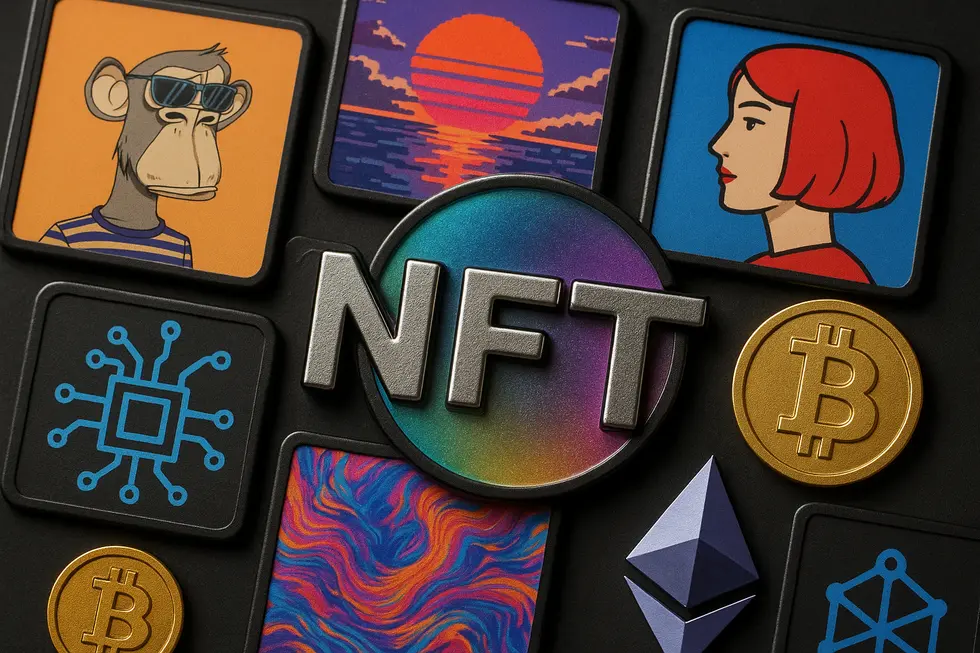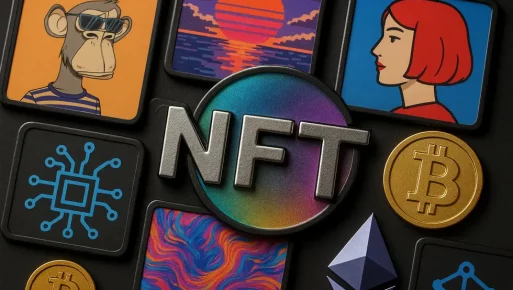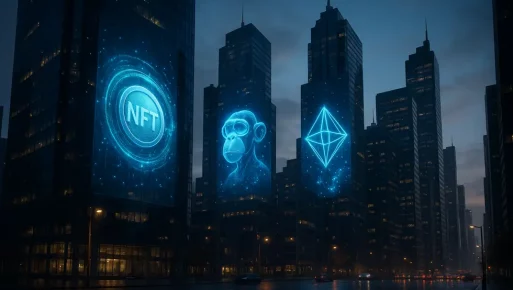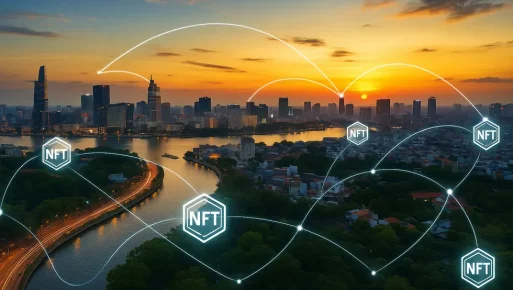Welcome to the exciting realm of NFTs, where the digital meets the tangible. For many newcomers, deciphering NFTs can be daunting, but fear not! In this guide, we aim to demystify the concept of NFTs, making them accessible to all. Each chapter is crafted to lead you progressively through the nuances of NFTs: starting from their definition, understanding their operation, learning to create them, engaging with marketplaces, and exploring their promising future. By the end, you’ll be well-equipped to venture into the vibrant world of NFTs with confidence.
Unraveling the NFT Phenomenon: A Beginner’s Guide in the Digital Age
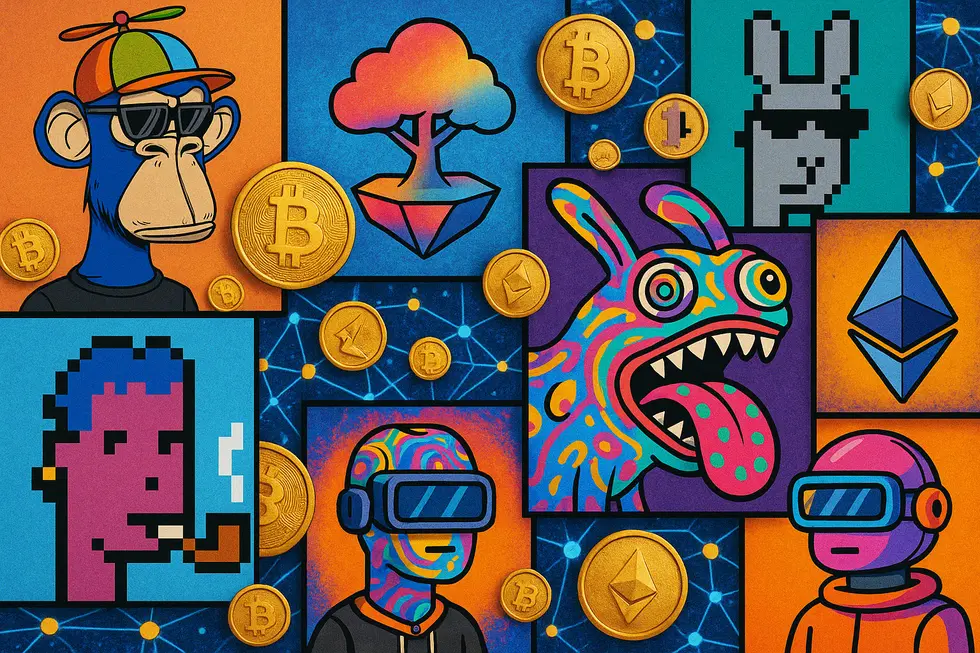
Navigating the waters of digital assets can be a daunting task for newcomers, but grasping “NFT explained A-Z for newbies” is a fundamental first step. NFTs, or non-fungible tokens, represent unique digital assets that are recorded on a blockchain, such as Ethereum. Unlike traditional cryptocurrencies like Bitcoin that can be exchanged equivalently, NFTs are non-interchangeable and distinct by nature, ensuring their unique value.
Functioning as digital certificates, NFTs authenticate ownership and establish the originality of digital items—be it art, music, videos, or collectibles. However, it’s crucial to note that owning an NFT does not necessarily equate to owning the copyright or intellectual property rights to the associated digital content. What you have is the verifiable ownership record on a blockchain, making NFTs a secure and transparent medium for trading.
In recent years, NFTs exploded in popularity, largely fueled by speculative investment opportunities bringing trading volumes from millions to billions. Despite their enticing potential, the NFT market isn’t without its criticisms. Concerns over environmental impacts, scams, and legal ambiguities persist, complicating the landscape even as momentum continues.
Ultimately, understanding “NFT explained A-Z for newbies” involves recognizing these tokens as pioneering tools that authenticate and enable the trading of digital items with reliability and transparency. For further exploration into the intricate dynamics of NFTs, check out the Wikipedia page on Non-fungible tokens.
Unveiling NFTs: Understanding Unique Digital Assets for Beginners
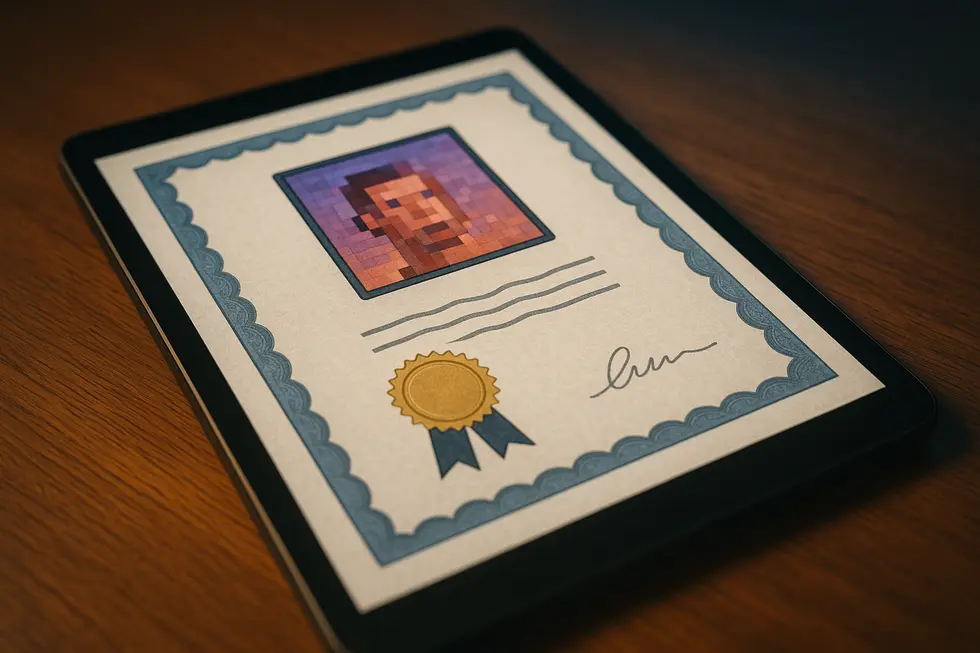
NFTs, or Non-Fungible Tokens, are a revolution in the digital space, offering a unique solution to digital ownership that’s beautifully explained in ‘NFT explained A-Z for newbies.’ Unlike traditional cryptocurrencies like Bitcoin, which are fungible and interchangeable, NFTs stand out due to their non-fungible nature—meaning each one is distinct. They are created and verified on blockchain technology, which ensures their authenticity and provides a transparent history of ownership.
One of the standout features of NFTs, as highlighted in ‘NFT explained A-Z for newbies,’ is uniqueness. Each NFT carries unique metadata that guarantees its individuality. This metadata is indivisible and you either own the entire NFT or you own none of it. The blockchain ledger, tamper-proof and transparent, maintains a record of all transactions, making it easy to track provenance and authenticate ownership.
Moreover, the scarcity aspect of NFTs creates an ecosystem where digital assets can appreciate over time. Creators can control the number issued, fostering a sense of rarity and value. Added to this is the programmability through smart contracts—automated agreements coded within the NFT that can enforce royalty payments or grant specific access rights to content, thereby revolutionizing how creators engage with their audience.
For those still curious about the distinction between NFTs and traditional cryptocurrencies, a more detailed examination can be found here. By understanding these fundamentals, anyone can begin to navigate the NFT world with confidence, as we delve deeper into ‘NFT explained A-Z for newbies.
Unraveling the Mechanisms of NFTs: NFT Explained A-Z for Newbies
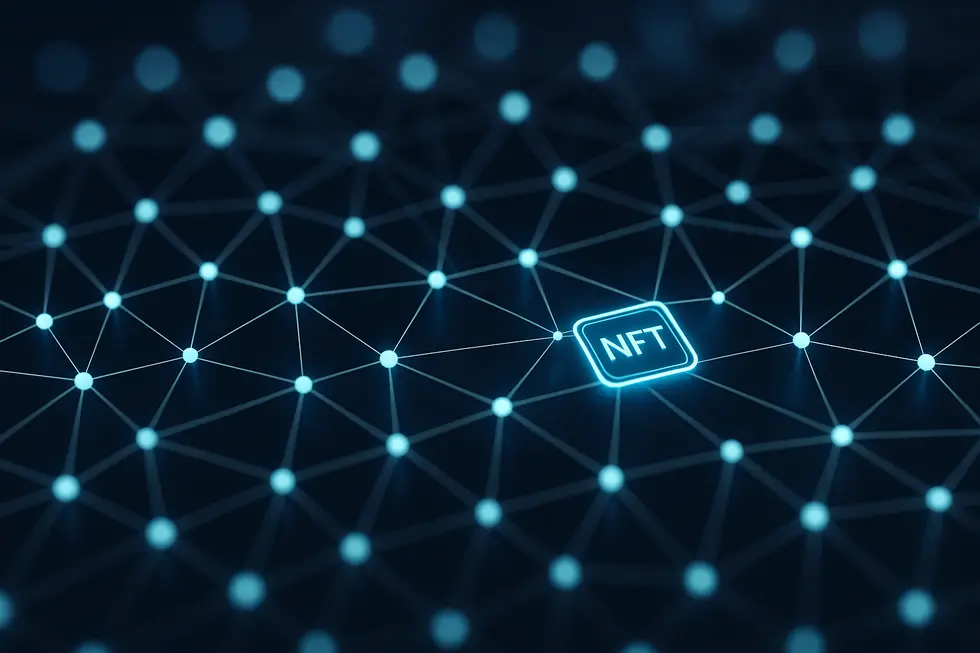
Understanding “NFT explained A-Z for newbies” hinges on grasping how NFTs function, fundamentally tied to blockchain technology. This digital scaffolding enables verifiable ownership and authenticity of NFTs. When an asset, such as digital art or music, is turned into an NFT—a process known as minting—it is uploaded to the blockchain, accruing a unique identifier and metadata. This includes details like the creator’s identity, the creation date, and properties relevant to its application or rarity in games.
Smart contracts play a pivotal role in managing NFTs. They are self-executing programs that automate actions like ownership transfer, payment of royalties upon resale, and unlocking additional content or utilities. Such contracts ensure operations are seamless, reducing the need for intermediaries. By leveraging these contracts, creators find new ways to monetize their work, as royalties are automatic.
NFTs are predominantly traded on platforms like OpenSea, allowing them to move fluidly between wallets and applications due to their blockchain foundation. They are structured under technical standards such as ERC-721 and ERC-1155, ensuring interoperability across various platforms. To interact with NFTs, a digital wallet compatible with cryptocurrencies, generally Ethereum, is required. This is critical for handling minting and transaction fees, known as gas fees.
In essence, NFTs leverage blockchain’s transparency and security to revolutionize digital assets, transforming them into programmable instruments of trade and ownership. For a comprehensive dive into how NFTs work, explore the Solflare Guide.
Unlocking the NFT World: The Art of Minting for Newbies
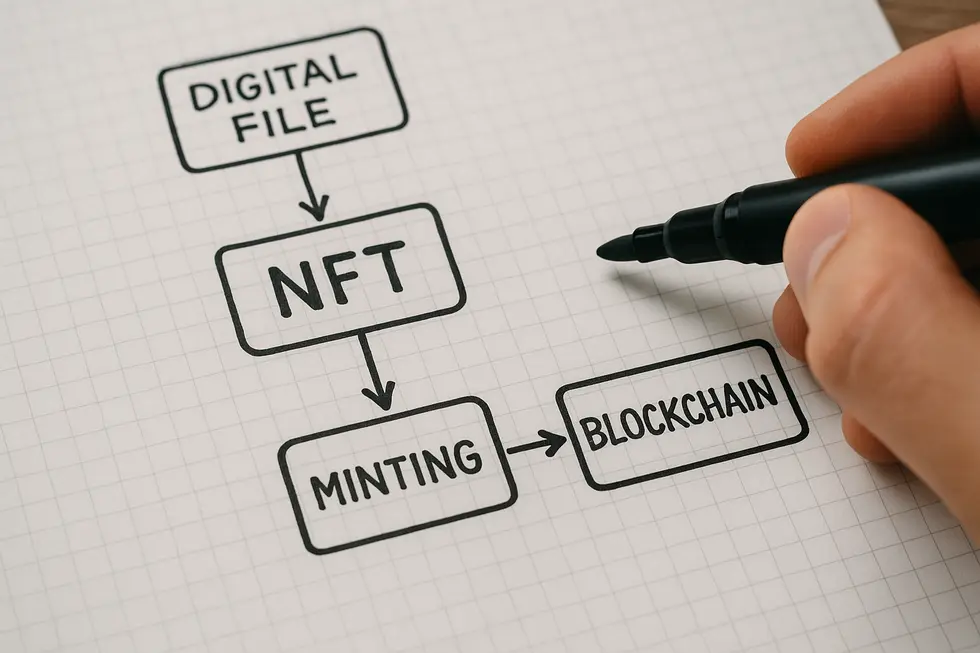
Minting an NFT is akin to an artist presenting a masterpiece to the digital realm, branding it with uniqueness and authenticity. At its core, minting involves converting your digital creation—be it art, music, or another form—into a blockchain-certified asset by uploading it to an NFT platform. This process embeds a permanent record on the blockchain, granting the digital piece its unique token identifier and associated metadata, crucial to track authorship and ownership.
The journey of NFT creation demands interaction with smart contracts, which are pivotal in generating a non-fungible token ID and anchoring it to your content. This cryptographic operation is verified across the blockchain, ensuring that the artwork remains irrefutably yours. Yet, as transformative as this process is, it’s not without costs—gas fees are necessary for powering blockchain transactions, though these have seen reductions in recent times. Learn more about gas fees here.
Beginner platforms like NFTBaz simplify this process: creators upload, fund their wallet, define their work, and confirm their minting transaction, setting their creation among the world’s digital artifacts. This transformation from digital file to NFT reflects a foundational step toward engaging with blockchain’s financial and cultural currents. For those stepping into this burgeoning sphere, mastering minting is the key to unlocking a universe where your digital creations are transparent, secure, and accessible to a global audience.
Navigating NFT Marketplaces: A Gateway for Novices
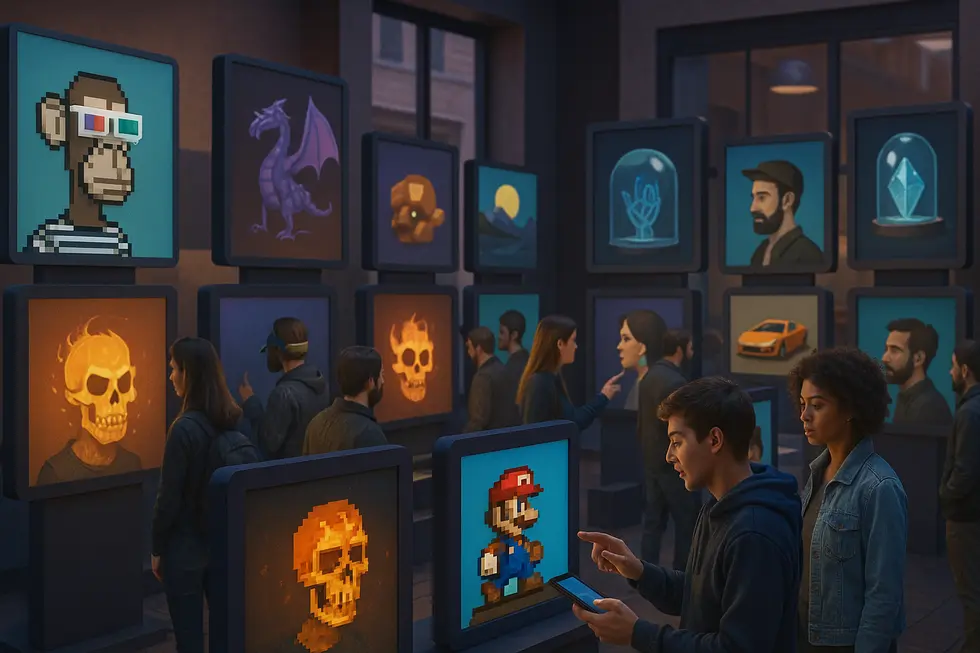
NFT marketplaces are digital platforms that have revolutionized how unique digital assets are exchanged. Understanding “NFT explained A-Z for newbies” involves grasping the functions of these marketplaces, which operate without centralized control, much like digital auction houses tailored for Web3. They enable users to discover, trade, and interact with NFTs seamlessly.
Within these marketplaces, there are a variety of platforms to explore. General platforms, like OpenSea and Rarible, support diverse NFT categories, making them a go-to for many users. But if you’re interested in specific industries, specialized venues like Propy for real estate or Royal for music might be your ideal choice. For those dealing with high-value digital assets, institutional marketplaces offer enterprise-level platforms with necessary identity verification and regulatory measures.
Popular marketplaces each offer unique features. OpenSea supports various blockchains and hosts the largest variety of collections, while Rarible provides customizable, community-owned experiences. For Ethereum enthusiasts, Blur presents advanced analytics and bidding tools, enhancing trading experiences. On the Solana blockchain, Magic Eden stands out with its blue-chip collections, and Tensor offers advanced liquidity features for traders. Exploring these platforms provides a robust understanding of how NFT marketplaces operate.
Securely engaging with these platforms requires a crypto wallet, such as MetaMask, which manages NFT collections and keeps private keys secure, ensuring user autonomy in transactions. These marketplaces also offer varying auction formats—from English to Dutch—catering to diverse trading strategies. With the advent of multi-chain functionality, trading NFTs across different networks is increasingly seamless. This chapter on NFT marketplaces provides the foundational understanding new users need to confidently enter the NFT ecosystem. For a deeper dive into comparing these popular platforms, consider checking this guide. Furthermore, to explore potential marketplace nuances, upgrad.com/blog/what-is-nft offers valuable insights.
NFT Use Cases and Future Trends: A Vision for the New Digital Frontier
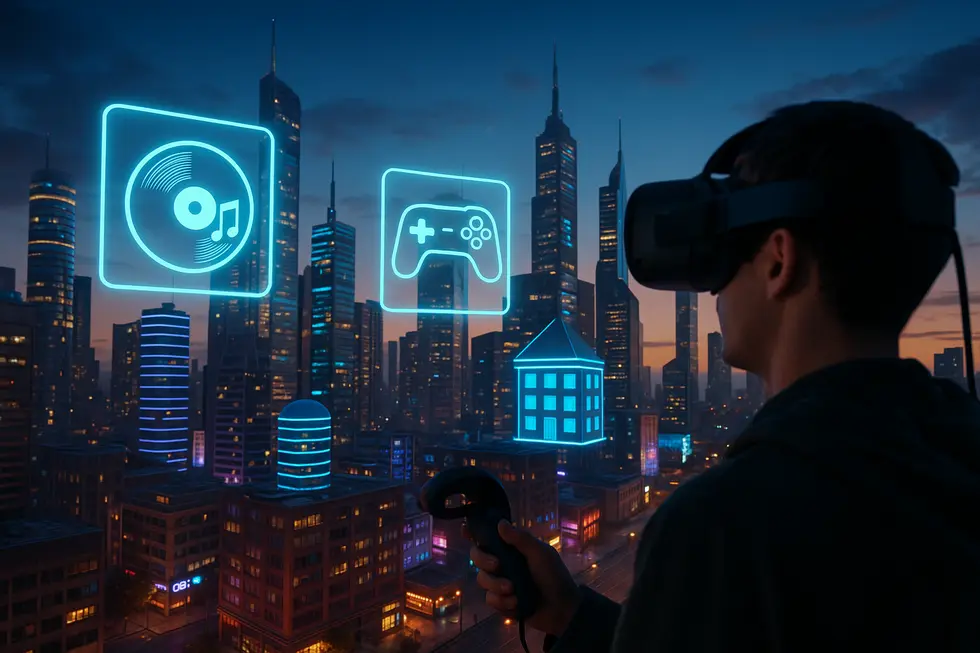
As the landscape of digital assets continues to evolve, understanding “NFT explained A-Z for newbies” involves exploring the vast array of use cases that are shaping the future. In the gaming industry, NFTs have revolutionized the concept of in-game ownership, fostering player-driven economies where assets can be traded and owned independently from platforms. Real-world asset tokenization is another groundbreaking application, with NFTs representing ownership of tangible assets like real estate, artifacts, or even carbon credits, thereby enhancing liquidity in previously illiquid markets.
The music and entertainment sectors are also transforming. Artists are now tokenizing their work to create new revenue streams, granting loyal fans the ability to engage with their creations in unprecedented ways. Similarly, NFTs in the fashion industry assure authenticity and traceability of luxury goods, effectively combating counterfeiting. In the digital realm, NFTs are pioneering virtual identity and metaverse integration, enabling users to own digital land or unique avatars that enhance social interactions.
Looking ahead, future trends in NFTs suggest substantial market growth, with estimates predicting a rise from $40 billion in 2024 to an impressive $200 billion by 2030, fueled by utility and real-world applications rather than mere speculation. Additionally, cross-chain interoperability is poised to enhance liquidity, while corporations like Amazon are increasingly adopting NFT models, indicating mainstream acceptance. Notably, regulatory frameworks are evolving, with standards like ERC-7857 emerging to guide innovation and compliance. This blend of advancements presents an exciting new chapter for digital ownership and innovation. For further insights, explore how brands use NFTs to engage communities.
Embracing the NFT Revolution: A Complete Guide for Newbies
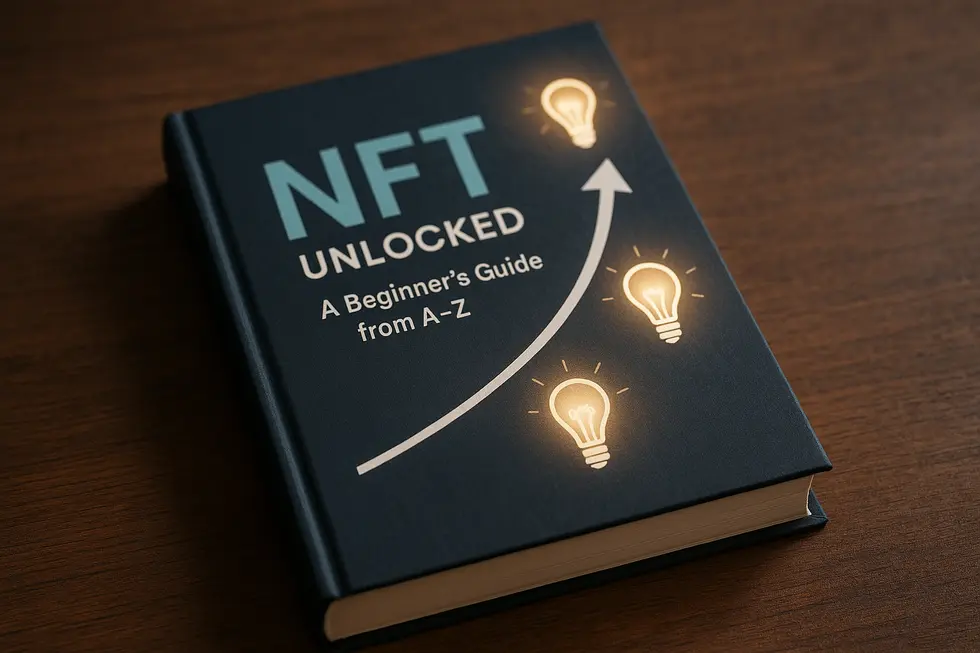
Understanding “NFT explained A-Z for newbies” opens the door to a transformative digital landscape where ownership, authenticity, and security converge. NFTs, or non-fungible tokens, are unique digital assets stored on blockchain networks, representing ownership of various digital and sometimes physical items. This chapter draws on all aspects of NFT creation and utility, emphasizing their role in a knowledgeable digital economy.
The essence of NFTs lies in their uniqueness and programmability. They are not just digital art pieces; NFTs can represent anything from virtual real estate to digital collectibles. Unlike traditional assets, NFTs are also programmable through smart contracts, which facilitate features such as automatic royalty distributions and unlockable content, bringing new dynamics to digital asset monetization and interaction.
For beginners, minting an NFT involves uploading a digital file to a platform like Hedera or NFTBaz, followed by setting token attributes and confirming a blockchain transaction. This results in a unique token ID, securely recorded and verifiable on the blockchain. The transactional nature ensures trustworthiness and authenticity, setting a robust framework for trading and transferring NFTs.
Embracing this evolving technology also means recognizing how NFTs differ from other blockchain assets, such as RWAs, which are primarily tied to tangible, real-world items. NFTs stand out for their distinctive design intended for digital uniqueness and utility.
In conclusion, embracing NFTs means acknowledging them as programmable, trustworthy digital assets that offer innovative opportunities for creators, collectors, and investors in a rapidly growing digital ecosystem. For additional insights on NFT utility and potential, consider further reading through resources like Solflare’s NFT guide.
Final thoughts
Having journeyed through the fundamentals of NFTs, from their definition to their market dynamics, you’re now equipped to dive into this lively digital domain. Embrace the possibilities NFTs offer, be it in art, gaming, or real estate, and continue exploring as the NFT landscape evolves.
About us
Monbase Global is a strategic partner of OpenLive Group, focused on expanding the reach and utility of blockchain and digital asset applications across international markets. As a core collaborator in the Monbase NFT ecosystem, Monbase Global plays a vital role in driving cross-border partnerships, investment strategies, and user adoption beyond Vietnam.
With a vision to build a decentralized digital economy rooted in trust and innovation, Monbase Global supports the international growth of NFTs, digital collectibles, and the use of the MBC token across various platforms. The partnership between Monbase Global and OpenLive Group brings together local insight and global ambition—creating real-world value for creators, collectors, and businesses alike.
🌐 Join the Monbase NFT community and stay ahead of the Web3 curve.
💬 Follow us on Telegram, Twitter, or Discord for drops and updates!
Facebook | X (formerly Twitter) | Telegram announcement | Telegram community


